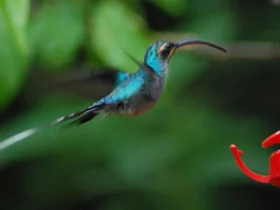Amidst the intricate tangle of roots and brackish waters that define mangrove ecosystems, a vibrant and elusive gem emerges—the Mangrove Pitta (Pitta megarhyncha). With its breathtaking plumage, captivating call, and unique coastal habitat, this bird species holds a special place in the hearts of birdwatchers, conservationists, and admirers of avian diversity. In this article, we embark on a journey into the captivating world of the Mangrove Pitta, exploring its appearance, behaviors, habitat significance, and the challenges it faces in its fragile coastal home.
Mangrove Pitta images
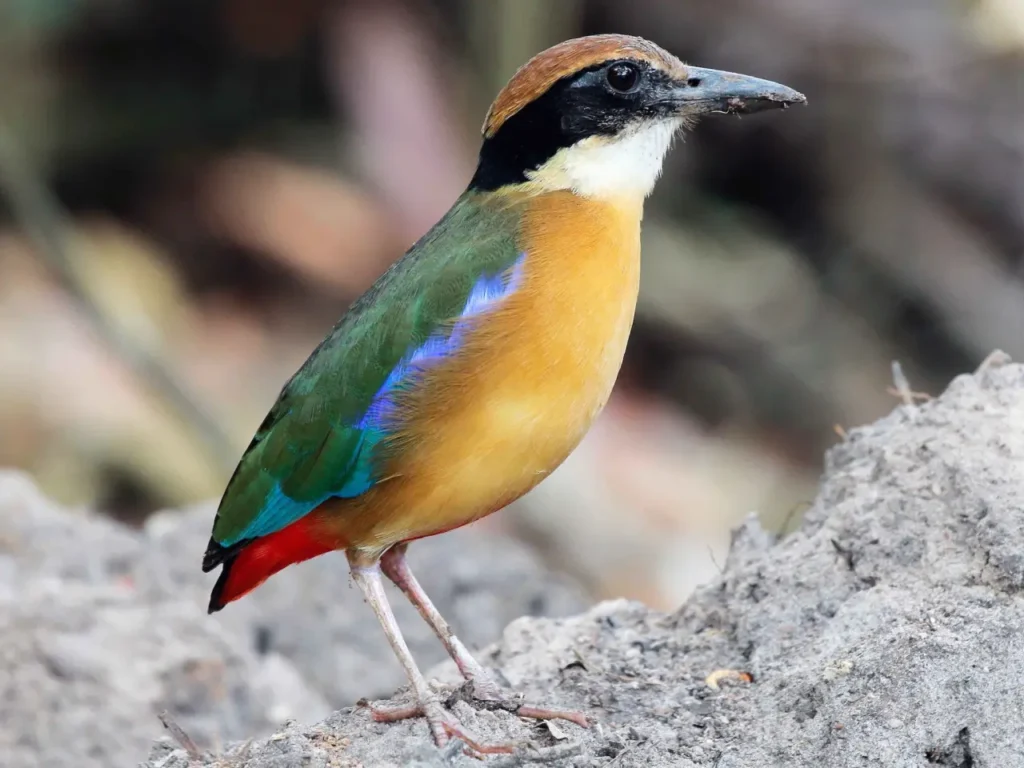

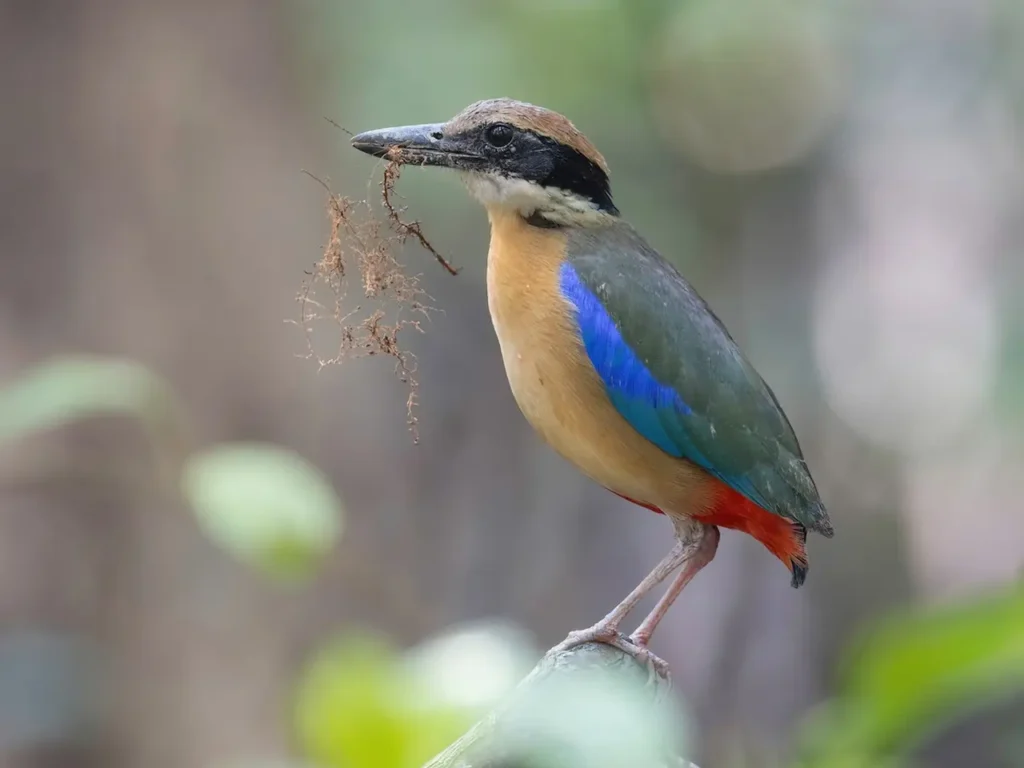
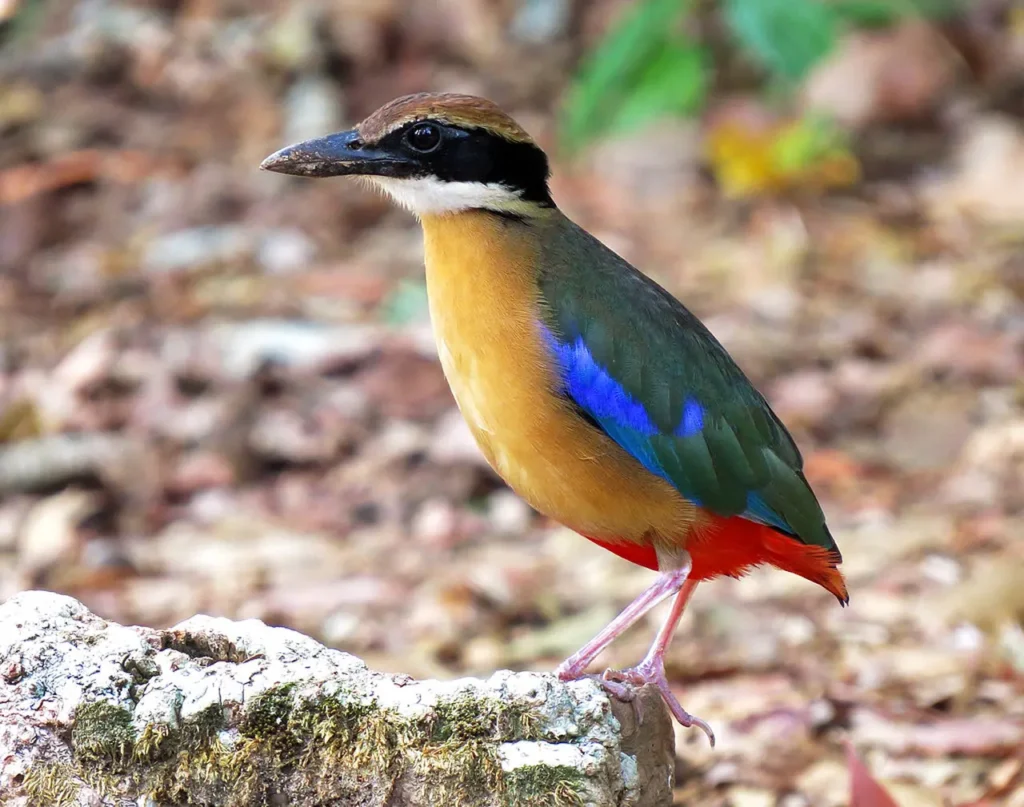
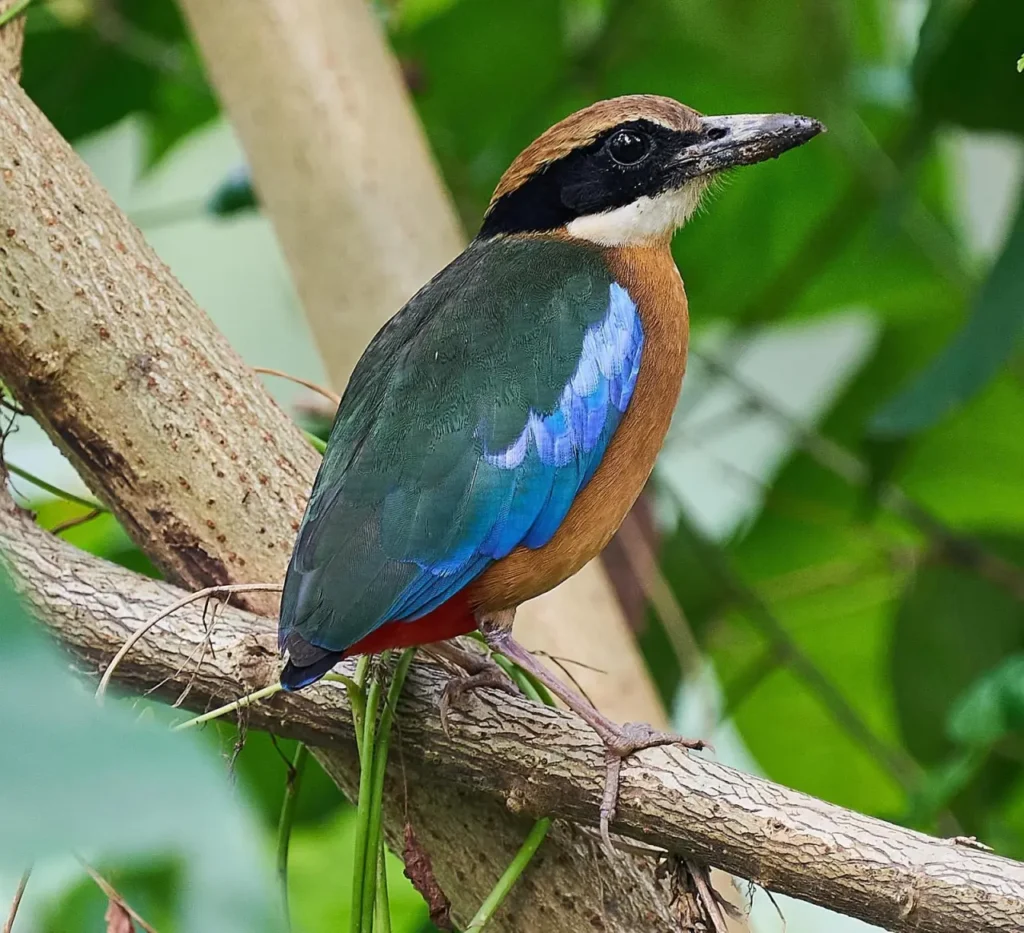
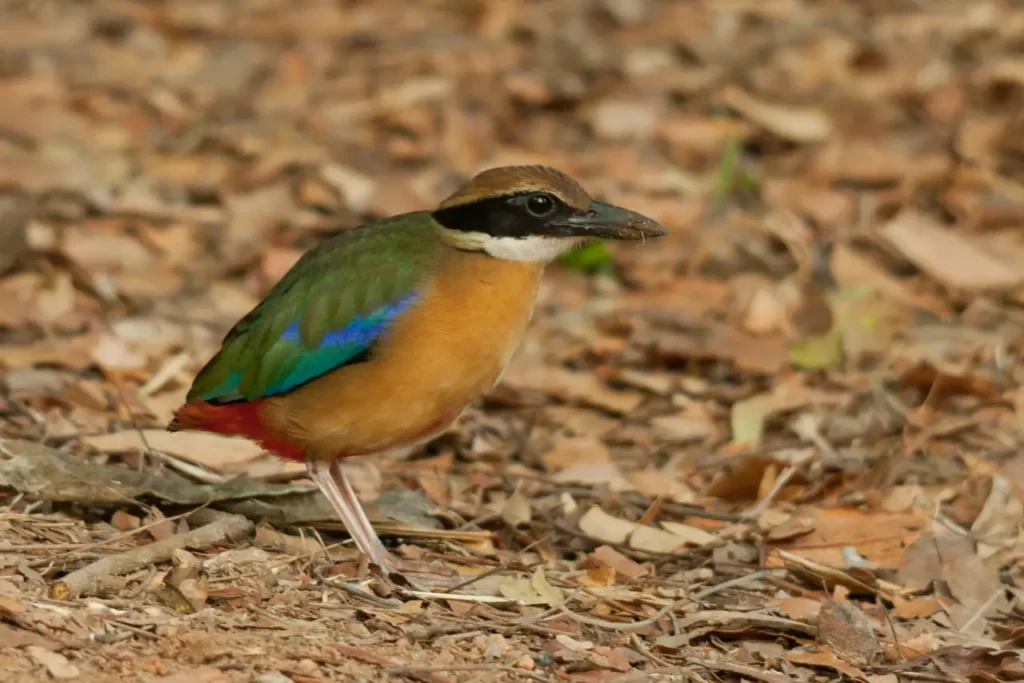
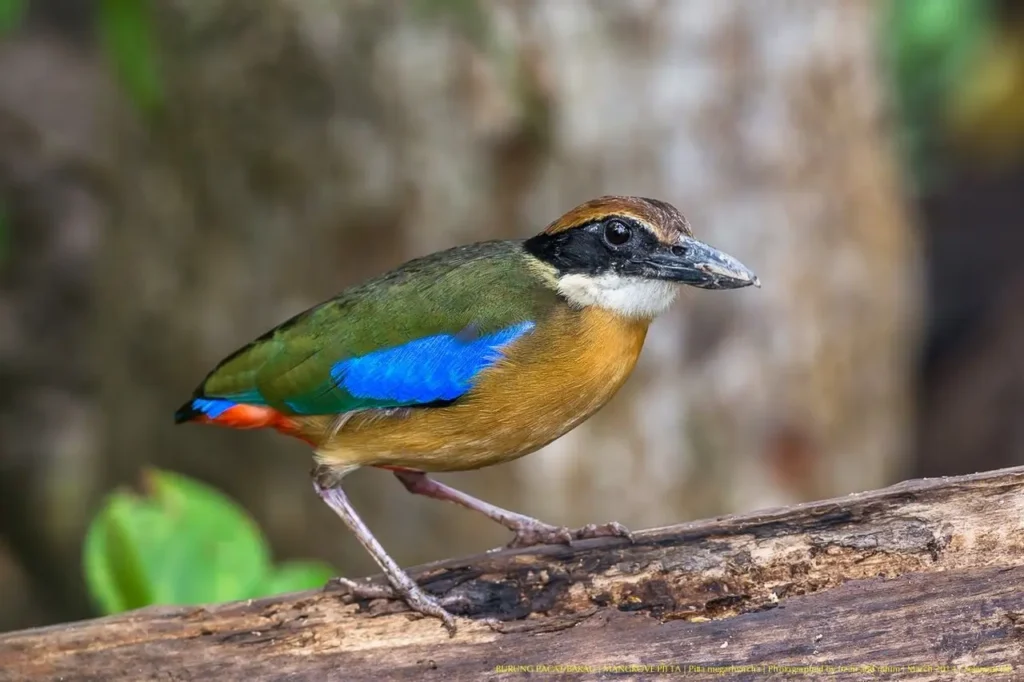
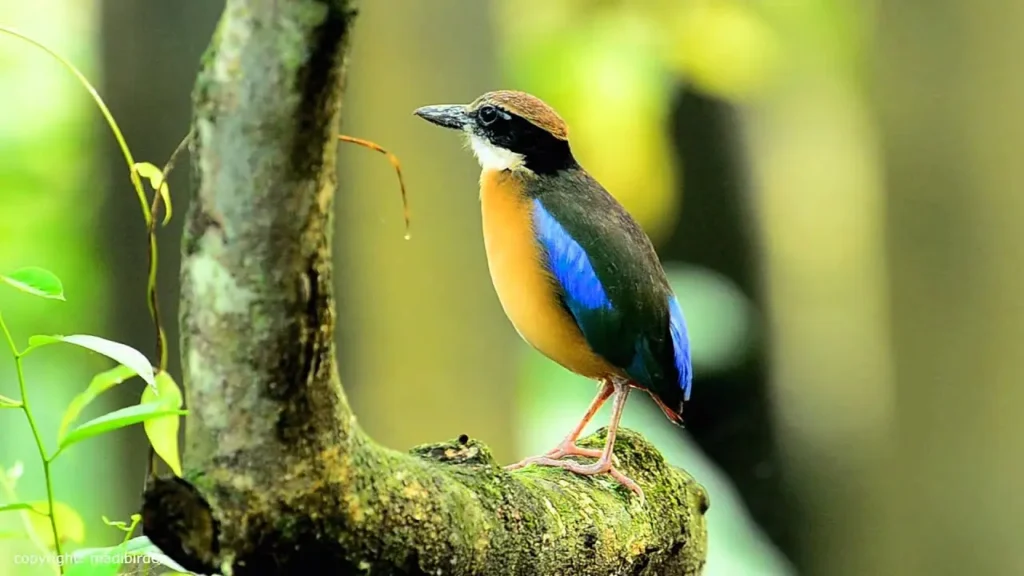


Appearance and Characteristics
The Mangrove Pitta is a small and brilliantly colored bird, showcasing an array of vibrant hues that dazzle the eye. Its upperparts are adorned with deep blue and green feathers that shimmer in the sunlight. The lowerparts are a rich chestnut-orange, and its wings boast bold black markings. A distinctive white line runs across its throat, adding a touch of elegance to its appearance. The Mangrove Pitta’s large and expressive eyes, surrounded by patches of deep blue, lend a sense of character to this already charismatic bird.
Behavior and Habitat
The Mangrove Pitta’s habitat preference is as unique as its appearance. Found exclusively in mangrove ecosystems, this bird has adapted to thrive in the challenging conditions of coastal habitats. Its sharp beak and strong legs aid in navigating the tangled mangrove roots, allowing it to move adeptly through its environment.
These pittas are known for their distinctive call—a series of melodious and echoing whistles that resonate through the dense mangrove forests. Their calls play a vital role in communication and territorial signaling, helping them establish their presence in these dense and often challenging habitats.
Ecological Significance
The Mangrove Pitta plays an essential role in the mangrove ecosystem. As insectivores, these birds help control insect populations, contributing to the overall balance of the ecosystem. Additionally, their presence indicates the health of the mangrove habitat, as their population dynamics are closely tied to the availability of suitable nesting sites and food sources.
Conservation and Challenges
Despite their vibrant beauty and ecological importance, Mangrove Pittas face numerous challenges that threaten their survival. Mangrove ecosystems are under increasing pressure due to habitat loss caused by urban development, agriculture, and aquaculture. Pollution and climate change also pose significant risks to these sensitive coastal habitats.
Conservation efforts are essential to protect the Mangrove Pitta and its habitat. Initiatives focused on preserving and restoring mangrove forests, raising awareness about the value of these ecosystems, and implementing sustainable development practices are key components of these efforts.
Conclusion
The Mangrove Pitta stands as a symbol of the delicate beauty and intricate connections that exist within coastal ecosystems. Its vibrant plumage and unique habitat preferences serve as a reminder of the remarkable diversity of life that can be found in even the most challenging environments. By learning about and advocating for the protection of the Mangrove Pitta and its coastal habitat, we contribute to the conservation of these invaluable ecosystems and the incredible creatures that call them home.
